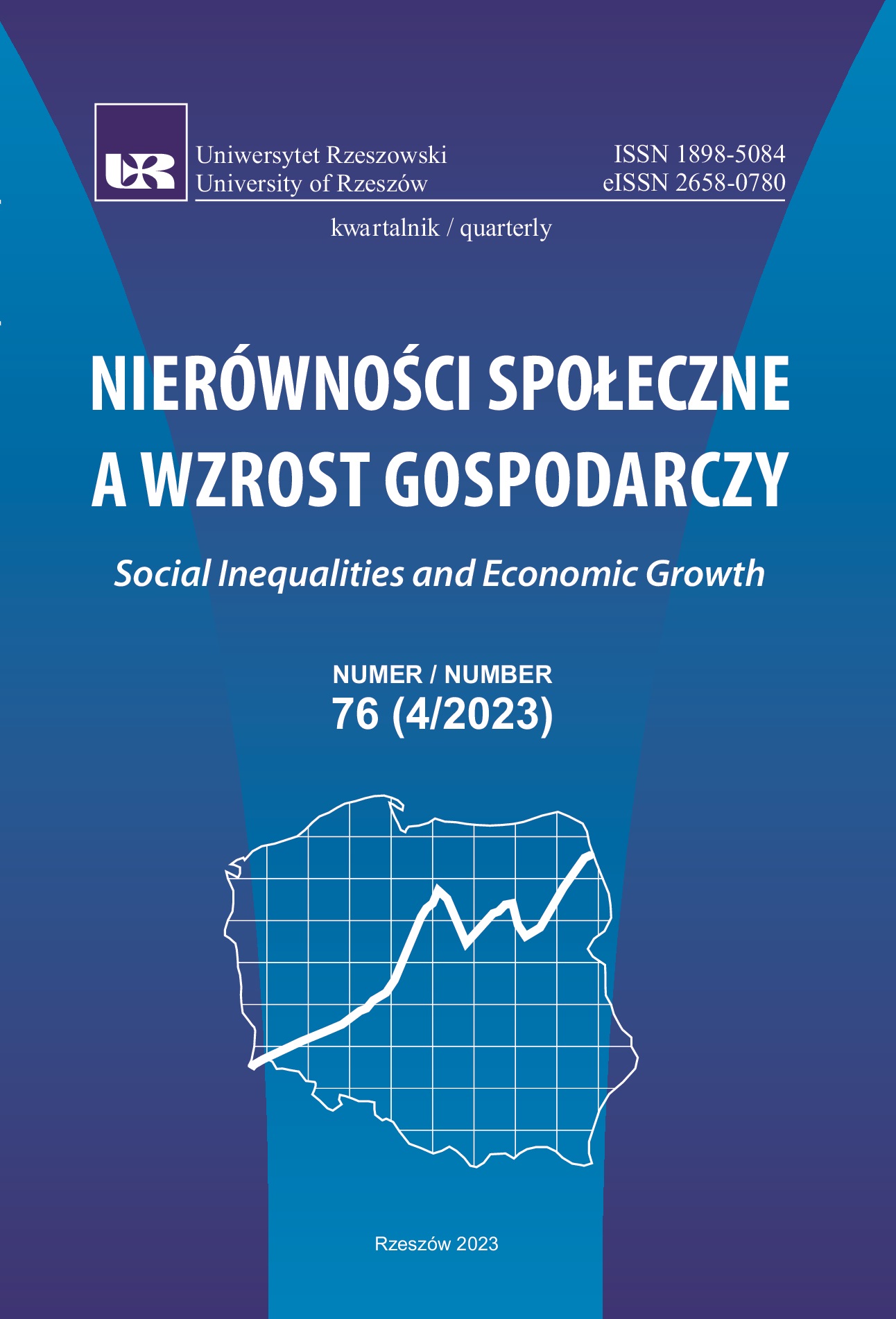Poziom realizacji dziesiątego celu zrównoważonego
rozwoju w krajach Unii Europejskiej
– ocena przy wykorzystaniu wielowymiarowej
analizy porównawczej w ujęciu dynamicznym
Level of implementation of the tenth Sustainable Development Goal – reducing
inequalities – in European Union countries – assessment using multidimensional
comparative analysis in a dynamic approach
Author(s): Małgorzata Raczkowska, Aneta MikułaSubject(s): National Economy, EU-Accession / EU-DEvelopment, Socio-Economic Research
Published by: Wydawnictwo Uniwersytetu Rzeszowskiego
Keywords: sustainable development; inequalities; European Union; linear ordering method; country ranking;
Summary/Abstract: Contemporary social and economic inequalities constitute one of the main obstacles tosustainable development, not only within individual societies but also on a global scale. Thepersistence of spatial disparities within the European Union in the realm of inequality reductionhighlights the need for research in this area. The objective of this article is to identify and assess thelevel of achievement of the tenth Sustainable Development Goal – the reduction of inequalities – inEuropean Union countries. The study covers the period from 2018 to 2022. The assessment of goalattainment is based on indicators monitored by Eurostat. A multidimensional comparative analysiswas employed in the article, utilizing the linear ordering method in a dynamic approach. Rankingsof countries, typological groups, and the scale of changes in the level of achieving the tenth goalbetween EU countries were derived from the calculated synthetic measure. The research resultsindicate significant diversity among EU countries in terms of social and economic inequality levels.Western and Northern European countries ranked higher, while Southern and Eastern Europeancountries ranked lower. Luxembourg, Ireland, and the Netherlands consistently occupied the topthree positions in all the analyzed years. Conversely, at the other end of the scale, were positionedthe two poorest EU countries, Romania and Bulgaria, as well as Spain and Italy, particularly affectedby migration issues. Improvement in the synthetic indicator value from 2018 to 2022 was observedin 13 EU countries, especially in Greece, Portugal, Poland, and Croatia. On the other hand, thegreatest decline in the synthetic measure value was noted in fourteen countries, notably Estonia,Bulgaria, and Romania.
Journal: Nierówności Społeczne a Wzrost Gospodarczy
- Issue Year: 2023
- Issue No: 76
- Page Range: 35-51
- Page Count: 17
- Language: Polish

